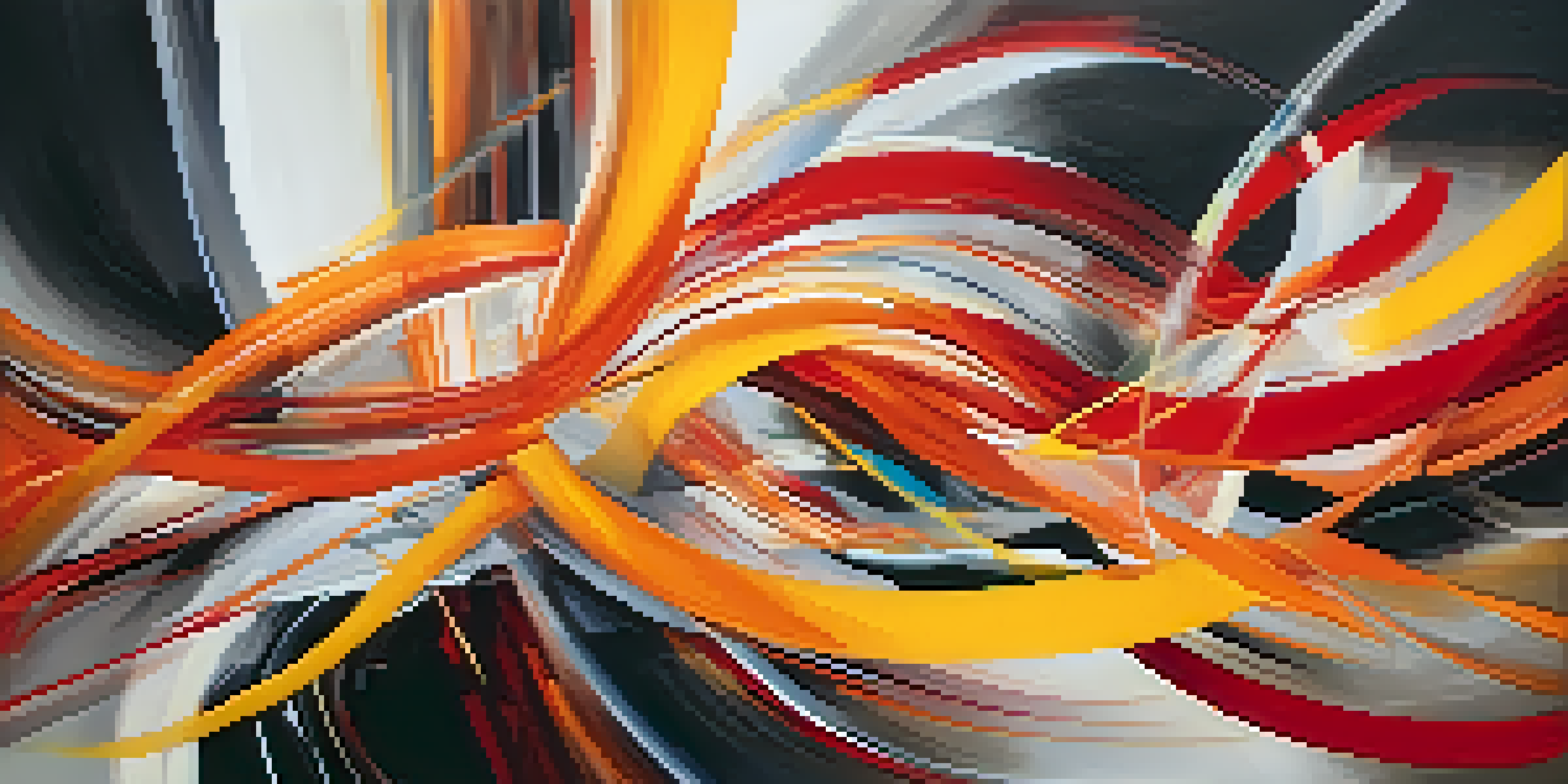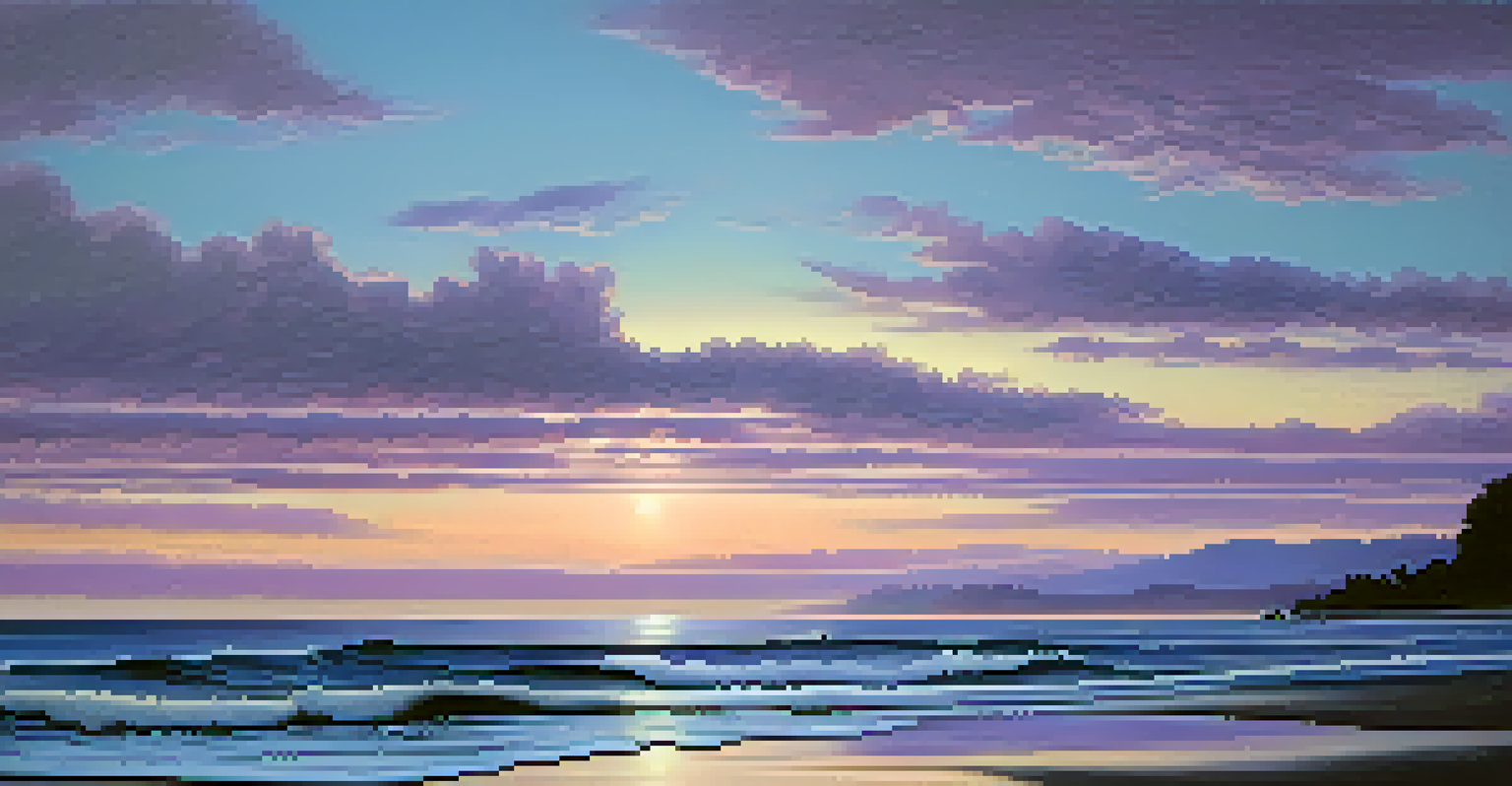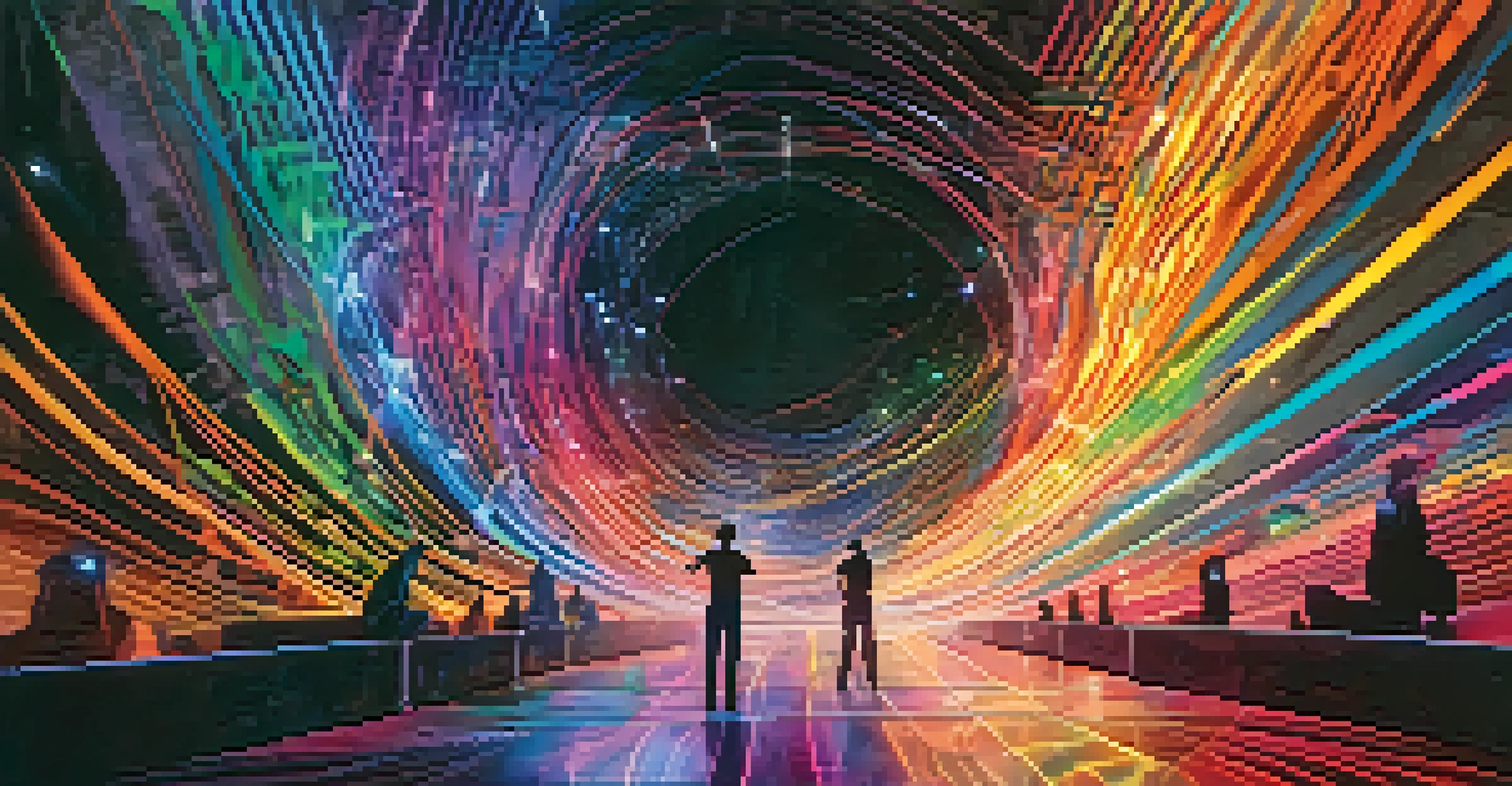Color Theory: Musical Notes and Their Visual Representations

Understanding Color Theory Basics in Music
Color theory is the study of how colors interact and the emotions they evoke. In music, notes can represent more than just sound; they can also convey feelings through colors. For instance, a bright yellow might symbolize a joyful melody, while deep blue could reflect a somber tune.
Color is the keyboard, the eyes are the harmonies, the soul is the piano with many strings.
This interplay of color and sound allows musicians and artists to create a more immersive experience for their audience. When we think of a piece of music, we often associate it with certain colors based on its mood. Understanding this connection can deepen our appreciation of both music and visual art.
Additionally, color theory can help in composing music by inspiring artists to think differently about their creations. By associating specific notes with colors, musicians can tap into a new layer of creativity, blending auditory and visual elements in unique ways.
The Emotional Spectrum of Colors and Music
Colors are known to evoke specific emotions, and this concept holds true in music as well. For example, red is often linked to passion or excitement, while green might suggest calmness or tranquility. This emotional spectrum can guide musicians in choosing the right notes and rhythms to convey their intended message.

When a composer decides to write a piece that feels lively, they might opt for brighter colors like yellow or orange, correlating those hues with upbeat melodies. Conversely, if they want to create a sense of nostalgia or longing, they may draw inspiration from darker shades, like purple or blue.
Color Enhances Musical Emotion
Colors evoke specific emotions that can guide musicians in creating melodies that resonate deeply with their audience.
Understanding the emotional impact of colors can help musicians connect with their audience on a deeper level. It’s not just about the sound; it’s about how that sound makes people feel, creating a holistic experience that resonates beyond the auditory.
Color Associations with Musical Notes
Different musical notes can be associated with specific colors based on various theories, such as the color wheel or synesthesia. For instance, some may perceive middle C as a warm, golden hue while D might appear as a vibrant green. This connection can be both personal and universal, differing from one person to another.
Music is the shorthand of emotion.
Musicians who embrace these associations often use them as a tool for inspiration, allowing colors to influence their compositions. By visualizing notes in color, they can create melodies that resonate more profoundly with listeners, enhancing their overall experience.
In essence, these color associations serve as a bridge between sound and sight, enriching the creative process. It transforms music from mere auditory pleasure into a multisensory adventure.
Exploring Synesthesia: Hearing Colors and Seeing Sounds
Synesthesia is a fascinating phenomenon where stimulation of one sensory pathway leads to automatic experiences in a second pathway. For musicians with synesthesia, sounds might evoke colors or shapes, creating a unique blend of experiences that can enhance their artistry. Imagine playing a note and seeing a burst of color; it’s a vivid experience that informs their music-making process.
This condition not only opens up new avenues for creativity but also invites listeners to engage with music in different ways. For example, a piece of music might be described as 'blue' or 'red,' offering a visual language that complements the auditory one.
Synesthesia Bridges Senses
Musicians with synesthesia experience a unique blend of sound and color, enriching their artistry and inviting listeners to engage with music in new ways.
Understanding synesthesia provides insights into how deeply interconnected our senses can be, ultimately enriching the experience of both musicians and their audience. It pushes the boundaries of traditional music perception, inviting us to explore further.
Visual Representations of Music: Art Meets Sound
Visual art often draws inspiration from music, creating pieces that represent melodies, rhythms, and emotions through color and form. Artists might interpret a symphony into a painting, using vibrant strokes and hues to capture the essence of the sound. This fusion of disciplines allows for a richer exploration of both art forms.
For example, a painting inspired by a lively jazz piece might be filled with dynamic lines and bright colors, reflecting the energy and improvisation of the music. Conversely, an artwork based on a classical composition might incorporate softer tones and smoother lines, mirroring the elegance and structure of the piece.
This interplay between visual art and music highlights the universality of human expression, showing how different mediums can communicate similar feelings. It invites audiences to experience music not just through sound, but through their visual senses as well.
Creating a Colorful Musical Experience
Musicians can intentionally create a colorful experience for their audience by incorporating visual elements into their performances. This could mean using lighting that changes in rhythm with the music or even collaborating with visual artists to create a dynamic backdrop. Such integration enhances the overall experience, making it more immersive.
For instance, a concert featuring electronic music might use vibrant projections that pulse and change color with the beat, visually representing the sound. This not only captivates the audience but also deepens their emotional connection to the performance.
Visual Elements Transform Performances
Incorporating visual elements like lighting and projections into musical performances creates a multisensory experience that captivates audiences.
Ultimately, creating a colorful musical experience can transform a simple concert into a multisensory journey, where sound and sight work harmoniously to evoke a profound response from the audience.
The Future of Color in Music Creation
As technology continues to evolve, the relationship between color and music is likely to grow even more intricate. Innovations such as virtual reality (VR) and augmented reality (AR) can offer new ways for musicians to incorporate visual elements into their work. Imagine stepping into a VR environment where you can not only hear music but also see it represented in a colorful landscape.
This forward-thinking approach opens up a myriad of possibilities for creative expression, allowing artists to push boundaries and explore new dimensions of their craft. With tools that blend sound and color, musicians can create experiences that are truly unique and memorable.

In conclusion, the future of color in music creation is bright and full of potential. As artists continue to experiment and innovate, we can look forward to a richer tapestry of experiences that intertwine color, sound, and emotion.